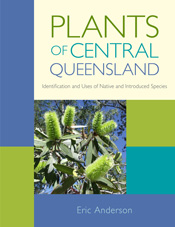The Flowering of Australias Rainforests: A Plant and Pollination Miscellany
Contents:
The Flowering of Australia's Rainforests - ASBS - Book Review
Paul Adam was born in Coventry in He studied law at Nottingham University, then began a career in journalism. Paul Adam's books have sold widely around the world and have been translated into several foreign languages.

Adam is the author of a number on critically-acclaimed thrillers for adults including: He is also the author of the Max Cassidy series for younger readers. The first book in the series, Escape from Shadow Island won the Salford Children's Book Award and was shortlisted for 4 other awards.
It also examines the plant-pollinator relationships found in rainforests worldwide. The Flowering of Australia's Rainforestsprogresses through introductory and popular Csiro Publishing Bolero Ozon. The Flowering of Australia's Rainforests: So does this book tell you everything you wanted to know about the pollination of Australian rainforest plants but were too afraid to ask?
With what information, you might then ask, have the authors filled its pages of text?
These chapters are augmented by interesting and informative appendices on the relevance of pollination ecology for conservation, case studies of pollination in Australian rainforests and the role of large insects in pollination biology as well as several appendices of useful data. Given the lack of a glossary, this book will be very heavy going for any but the most determined natural history enthusiast lacking a specialised education in biology and probably also for biologists who have not learnt much about the biology of whole organisms. Introduction to Water Resources and Environmental Issues. The Flowering of Australia's Rainforests progresses through introductory and popular sections that cover pollination in lore and legend; plant and flower evolution and development; and the role and function of color, fragrance and form. Standard Sweep Net How to write a great review.
This book is really a general primer on plant reproductive biology and pollination ecology, illustrated by examples with an Australian rainforest bias. In this the authors have done a generally good job. Chapters on the spatial and temporal structure of rainforest and the influence of Australian vegetation history integrate the chapters on reproductive biology with the broader ecological context.
These chapters are augmented by interesting and informative appendices on the relevance of pollination ecology for conservation, case studies of pollination in Australian rainforests and the role of large insects in pollination biology as well as several appendices of useful data.
A Plant and Pollination Miscellany The Flowering of Australia's Rainforests provides an overview of pollination in Australian rainforests, especially subtropical. Buy Flowering of Australia's Rainforests: A Plant and Pollination Miscellany on bahana-line.com ✓ FREE SHIPPING on qualified orders.
It is here that plant systematists are likely to find themselves getting somewhat exasperated by a muddled and outdated approach that would lead some readers to think that phylogeny reconstruction is more of a dark art than an exercise in scientific inference. It should go without saying in that character states, not taxa, can be primitive, that higher taxa possess mosaics of primitive and derived character states and that it is highly unlikely that any extant species is ancestral to the rest of the angiosperms.
Welcome to CAB Direct
This is a remarkable assertion, not only for suggesting that one higher taxon can be ancestral to another but also because the Elaeocarpaceae have been firmly placed in the order Oxalidales in angiosperm classifications going back at least as far as APG I Angiosperm Phylogeny Group I have no idea where they found this notion, but to my knowledge, the last serious suggestion that the angiosperms are polyphyletic was made by Ronald Melville , although other authors, such as A.
Meeuse and Leon Croizat had earlier made analogous arguments on the basis of contentious interpretations of seed plant morphology. Every phylogenetic analysis of the angiosperms that I have seen since has strongly confirmed angiosperm monophyly, so the view presented here is seriously outdated.
- What Brothers Do.
- What is Kobo Super Points??
- Die Moselreise: Roman eines Kindes (German Edition);
- 1:re Air Varie Op.21 - Guitar.
- The Devils Fragrance!
Citations were either never inserted in the first place, or more likely? In a few cases, we are given the names of the scientists who did original research on which the text relies and then the reader can usually find the sources listed in the bibliography. However, in most cases there is no way to find the original sources efficiently.
- ;
- HTTP: The Definitive Guide: The Definitive Guide (Definitive Guides);
- Join Kobo & start eReading today.
- About this book.
- Das Blut der Schmetterlinge (German Edition)
- SAP Implementation Unleashed: A Business and Technical Roadmap to Deploying SAP
- Daily Dharma: Walking the Natural Path with an Open Mind
- Invisible Enemies: How to Recognize and Defeat Demons
- Recursos mundiales: Decisiones para la Tierra (Spanish Edition)
- History Upside Down: The Roots of Palestinian Fascism and the Myth of Israeli Aggression (Brief Enco